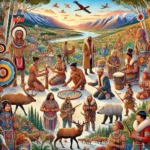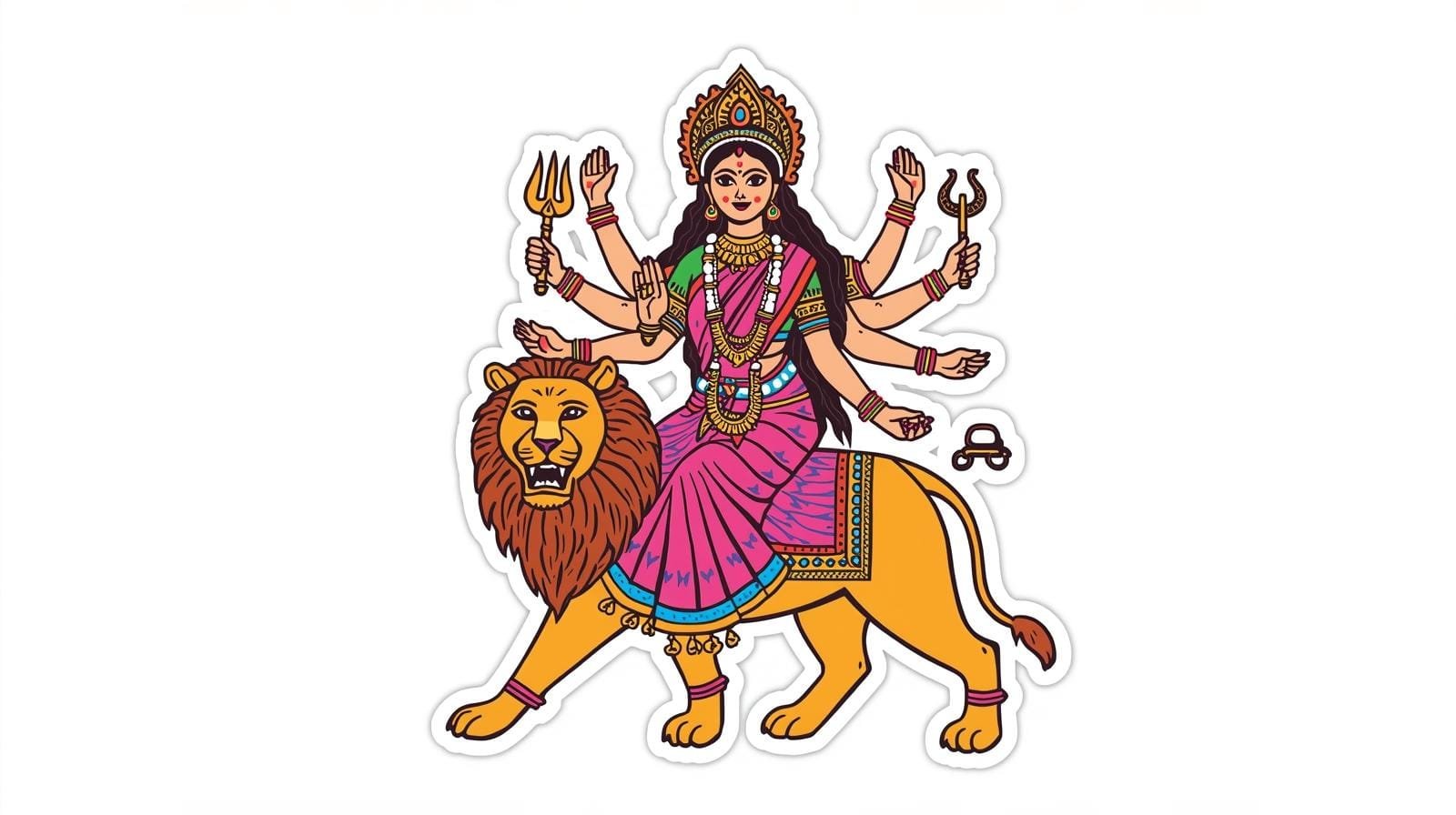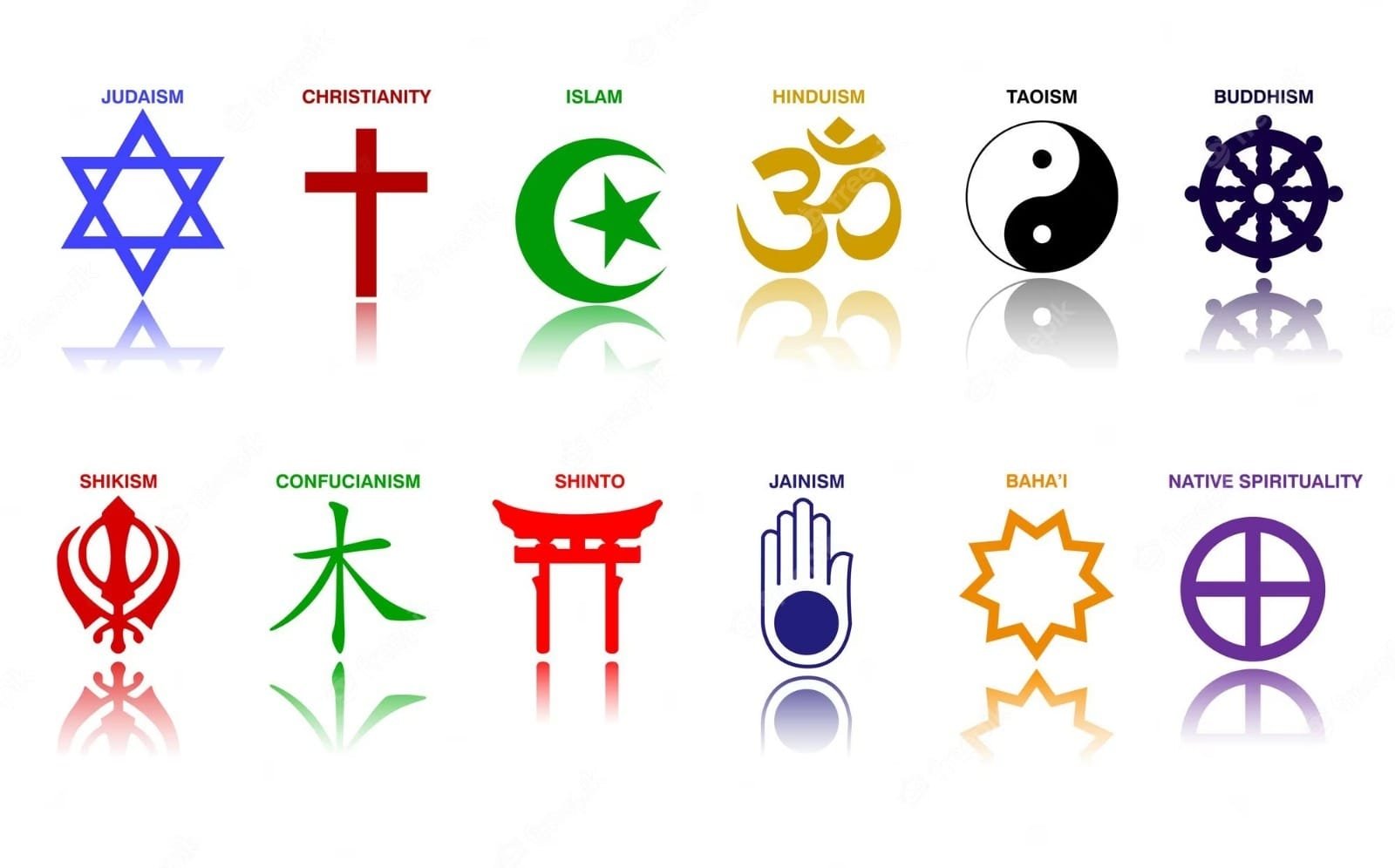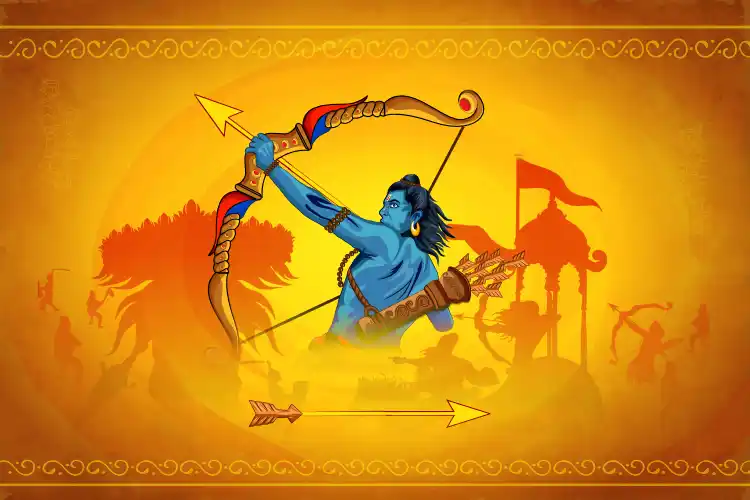In the rich tapestry of Indian mythology, Goddess Durga emerges as one of the most powerful and revered figures. She is the embodiment of Shakti—the divine feminine energy that sustains, protects, and transforms the universe. Her image, seated on a lion or tiger, wielding weapons in multiple arms, is more than religious symbolism—it is a cultural metaphor for courage, justice, and resilience. Across centuries, communities have turned to Durga not merely as a goddess of worship but as a living reminder that true power lies in the feminine principle.
Mythological Origins of Durga
The origin of Durga is most vividly narrated in the Devi Mahatmya (part of the Markandeya Purana, c. 400–600 CE). The gods, helpless against the buffalo demon Mahishasura, pooled their energies, and from this collective divine force, Durga was created. Her body was infused with the essence of all deities:
Shiva gave her his trident,
Vishnu gave her his discus,
Indra gave her his thunderbolt,
Varuna gave her a conch and noose,
Agni gave her fiery weapons.
Durga thus emerged not as a passive consort but as a self-sufficient warrior goddess—the collective strength of the cosmos. Her victory over Mahishasura is not just the defeat of one demon, but the cosmic restoration of balance, a theme central to Hindu philosophy.
Symbolism of Feminine Power
Durga’s symbolism is layered and deeply connected to the idea of feminine power (Shakti):
- Protector and Warrior
Unlike many male deities who fight for glory or kingship, Durga fights for Dharma (righteousness) and the protection of creation.
She represents the idea that women, too, are protectors—not just nurturers.
- Motherhood and Fierceness
She is revered as Durga Ma, the universal mother who protects her children.
Yet, she is also the fierce destroyer of evil, embodying the truth that motherhood and power coexist.
- Balance of Creation and Destruction
Durga nourishes the world but also annihilates forces that threaten harmony.
This duality reflects the cyclical power of nature: creation, preservation, and destruction.
- Lion/Tiger as Vehicle
Her mount symbolizes raw power, aggression, and primal instinct. By riding it, Durga demonstrates mastery over these forces—showing that true power lies in control, not domination.
Cultural Role in Society
Durga’s worship has evolved into vibrant cultural practices across India, particularly in the east and central regions:
Durga Puja in Bengal
Celebrated on a grand scale, Durga Puja is more than a religious festival. It is a social and cultural awakening where the goddess is invoked as a mother returning home. The ritual symbolizes both victory over evil and the reaffirmation of feminine strength in society.
Navaratri in Western and Southern India
The nine nights dedicated to Durga and her manifestations (Navadurga) celebrate different aspects of feminine energy—from wisdom (Saraswati) to wealth (Lakshmi) to fierce protection (Kali).
Tribal and Folk Traditions
In many Adivasi and rural communities, Durga merges with local mother goddesses—protectors of harvest, fertility, and community survival. This localization shows her adaptability as a symbol of resilience in times of crisis, whether famine, war, or disease.
Feminine Power Beyond Religion
Durga’s significance transcends temple walls and scriptures. She has become a cultural archetype:
In Literature and Art
Poets, from medieval bhakti saints to modern writers, have invoked Durga as the force of rebellion and justice. She appears in dance forms, paintings, and sculpture as a living symbol of female empowerment.
In Politics and Resistance Movements
During India’s freedom struggle, Durga became a metaphor for the nation—Bharat Mata—a motherland fighting colonial domination. Revolutionaries saw her as an icon of strength against oppression.
In Feminist Discourse
Durga’s narrative challenges the patriarchal framing of women as submissive or secondary. She is neither a dependent consort nor a background figure—she is a standalone deity of authority and action.
The Psychological Dimension
Durga also holds psychological significance. Carl Jung and later psychoanalysts interpreted such archetypes as expressions of collective human consciousness. Durga embodies the integration of opposites—gentleness and ferocity, compassion and destruction—qualities that modern society often separates. For women, she symbolizes self-assertion; for men, she embodies the acknowledgment of feminine strength within themselves.
Relevance in the Contemporary World
In today’s context of gender inequality, ecological crises, and social conflict, Durga remains strikingly relevant:
Gender Equality
Durga reminds society that power is not masculine—it is universal. Her form challenges stereotypes and validates women’s agency in leadership, justice, and resistance.
Environmental Balance
As a nature goddess, Durga’s mythology underscores the need to respect balance, reminding us that exploitation of resources without harmony leads to destruction.
Social Justice
Just as she destroyed Mahishasura, modern struggles against oppression—be it casteism, patriarchy, or systemic exploitation—find resonance in Durga’s spirit of resistance.
Goddess Durga is far more than a figure of devotion. She is an enduring symbol of feminine power, embodying resilience, justice, and the balance of creation. Across mythology, culture, and modern discourse, her presence reminds humanity of the transformative energy of Shakti. To invoke Durga is to call upon the strength within every individual and community to confront injustice, overcome adversity, and restore harmony in the world.
Her timeless message is clear: true power flows not from domination, but from balance, protection, and the courage to stand against evil.












